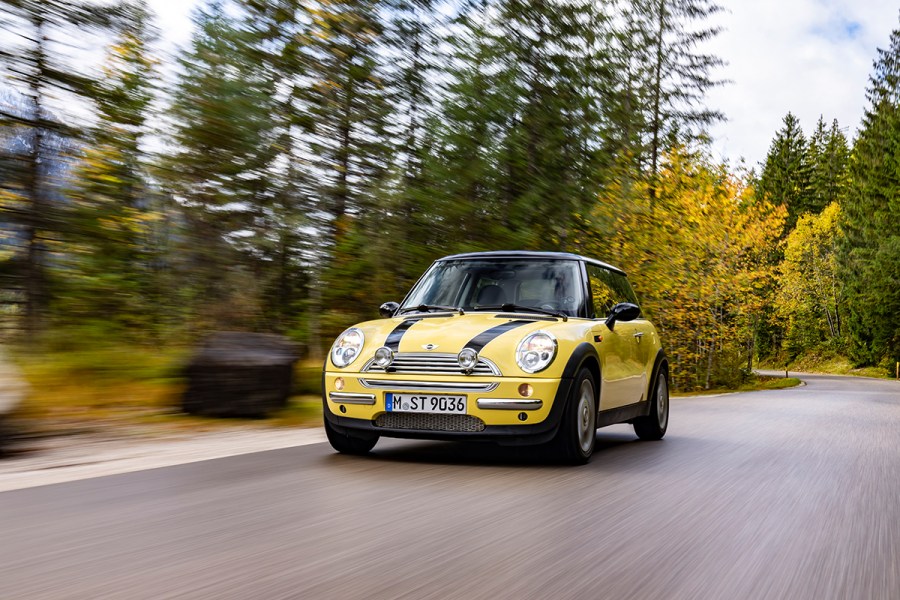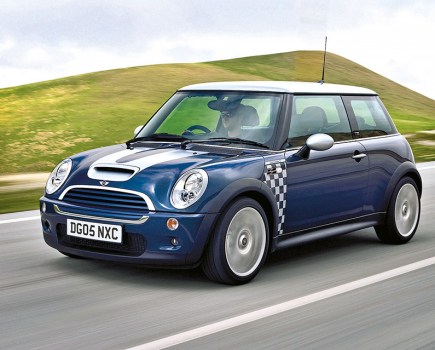One of the best used cars to buy for the money, we identify the most common problems to blight the first-generation Mini R50 models, and how to cure and prevent them in this buyer’s guide.
BMW has just revealed its fifth-generation Mini Cooper, but it was a different story in 1994, when BMW took the helm along with Rover. How do you replace a car that’s seemingly irreplaceable? After all, the Classic Mini had been on sale for four decades, by the time the last Cooper Sport rolled down the Longbridge production line with Lulu at the wheel in 2000. Concepts debuting in 1997 kept classic Mini fans guessing, but latterly it turns out, these were all designs rejected before the final Frank Stephenson-styled model.
The ’New Mini’, or R50 as we now know it, finally made its debut at the Frankfurt Motor Show in September of that same year. However, it took a further four years to make production, thanks to Rover’s sale to the Phoenix consortium, BMW keeping the Mini brand and production moving from Longbridge in Birmingham to Cowley in Oxford.
It has been over 23 years since the first ‘New Minis’ found their owners, but buyers continue to be attracted by this car’s mixture of cheeky but sympathetic styling, quality build, impressive safety features, low running costs and whether you choose the One or Cooper, both are great fun to drive.
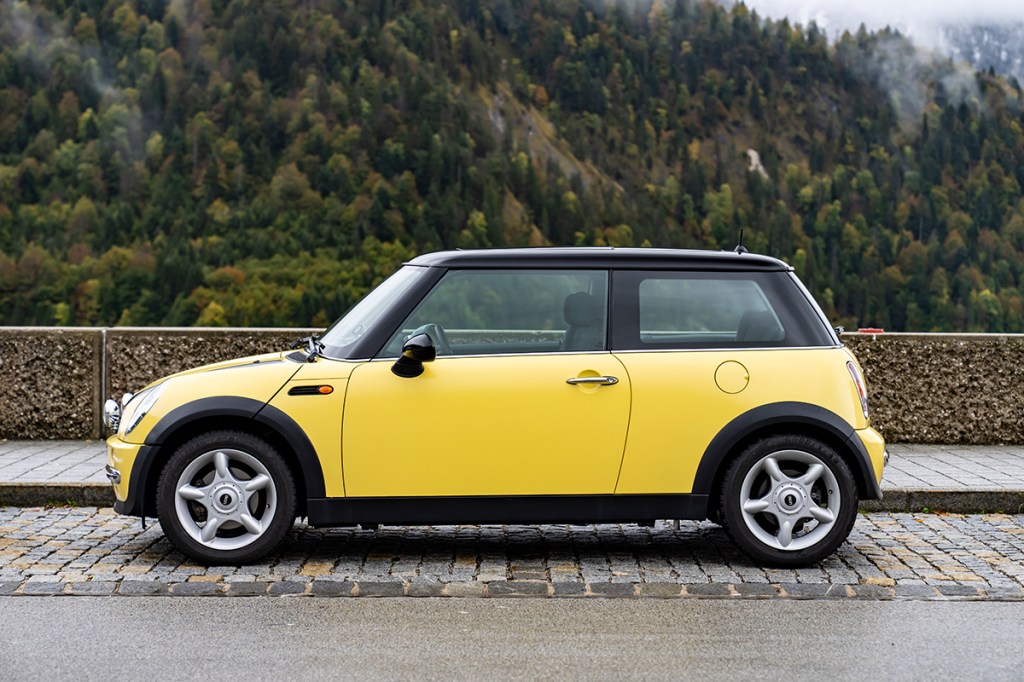
Mini R50 One and Cooper history
On July 7, 2001, in the UK, and March 22, 2002, in the US, Mini dealers opened for business. R50 One and Cooper models were available to buy in the U.K, with the Cooper and R53 Cooper S (not covered in this buyer’s guide) available in the US.
Salt, Pepper, and Chili packs were available for the One and Pepper and Chili available for the Cooper. R50 Mini models were powered by a 1.6-litre,16-valve, Chrysler-supplied Tritec engine. The One produced 90hp at 5500rpm, along with 101lb ft of torque at 3000rpm, and that meant a 0-62 time of 10.6 seconds and a top speed of 112mph. The Cooper was powered by a retuned version of the same engine delivering 115hp at 6000rpm, along with 110lb ft at 4500 rpm, and that resulted in a 0-62 time of 9.3 seconds and a top speed of 125mph. A five-speed manual transmission was standard, with Steptronic automatic an option.
Autumn 2004 saw the Mini R50 get its mid-life facelift or LCI (Life Cycle Impulse in BMW language) in the UK or early 2005 for the US market, with trim changes, new colors, and more options. You’ll spot a facelifted R50 One or Cooper by brighter new front and rear lights, alloy wheels, plus exterior and interior tweaks. The most significant change was the fitment of a stronger, more reliable Getrag five-speed gearbox, replacing the previous, problematic Rover-derived R65 or Midlands five-speed gearbox. Production of the first-generation Mini R50 eventually stopped in 2006.
R50 Mini One and Cooper model timeline
- July 2001 – R50 One (90bhp) and Cooper (115bhp) hatchback models launched in the UK.
- March 2002 – R50 Cooper (115bhp), R50 Cooper S (165bhp) models launched in the US.
- Spring 2002 newly rebranded and MINI approved John Cooper Works (JCW) tuning kit offered for the R50 Cooper. Also fitted to JCW Challenge racing Coopers at the time, it included a ported head and ECU remap, power is up to 132bhp.
- September 2004/April 2005 – the R50 got its mid-life or LCI (Life Cycle Impulse in BMW language) facelift, with trim changes new colors and more options. The most significant change for the Cooper was the fitment of a stronger, more reliable five-speed gearbox made by Getrag, replacing the problematic previous ‘Midlands’ five-speed gearbox for One and a Cooper models.
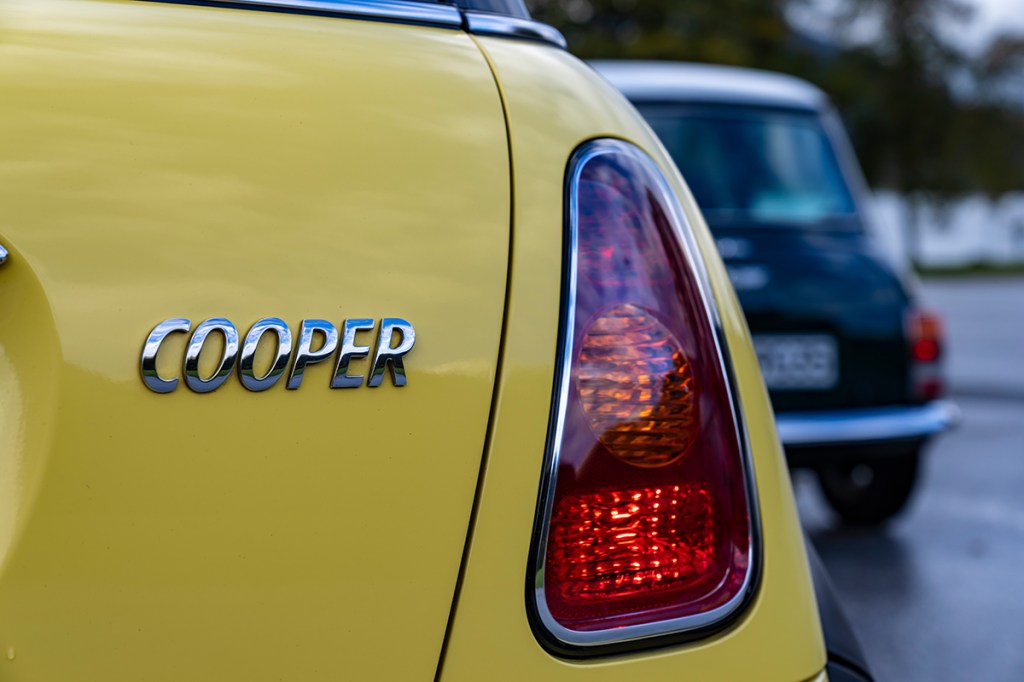
Differences between UK and US R50 Minis
Apart from US spec front and rear wheel arch lights, there are no other bodywork changes between UK and US Minis.
Bigger differences are the choice of Mini models available. Do not expect to find the entry-level One, as only the R50 Cooper has ever been available in the US.
Diesel is another US no go, so there are no One D models available.
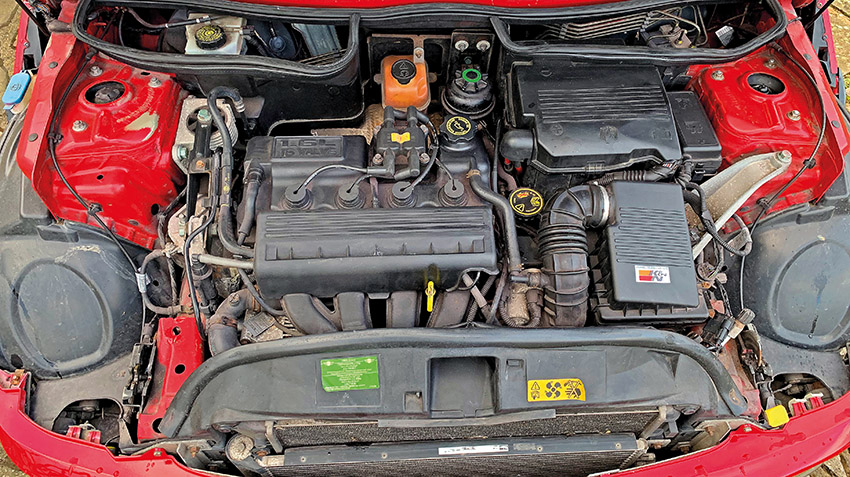
Does the Mini R50 One Or Cooper engine have any issues?
Before you start any Mini R50, make sure it’s got plenty of oil in it – head gasket failure isn’t unheard of, and the Tritec engine likes a drink. Plus, the main cooling fan thermostat is a known failure point, causing it to overheat even with the electric fan cutting in. Oil leaks are all too common around the rocker cover, sump and oil filter surrounds, too.
Start it up, then listen for any odd top or bottom rattles. A top-end rattle suggests hydraulic tappet or timing chain tensioner problems. Bottom end noises could suggest the engine has been run low on oil at some point and may need for a costly rebuild. Also, check the oil-filled engine mount at the side of the engine, it’s prone to failure, and it will be obvious if it has, as oil will have leaked on the front chassis leg.
Suspension issues
Minis were fitted with standard run-flat tires, which make the ride hard, especially with the sports suspension. By now, owners will have removed them, but check the condition of the anti-roll bar links, bushes, and shock absorbers.
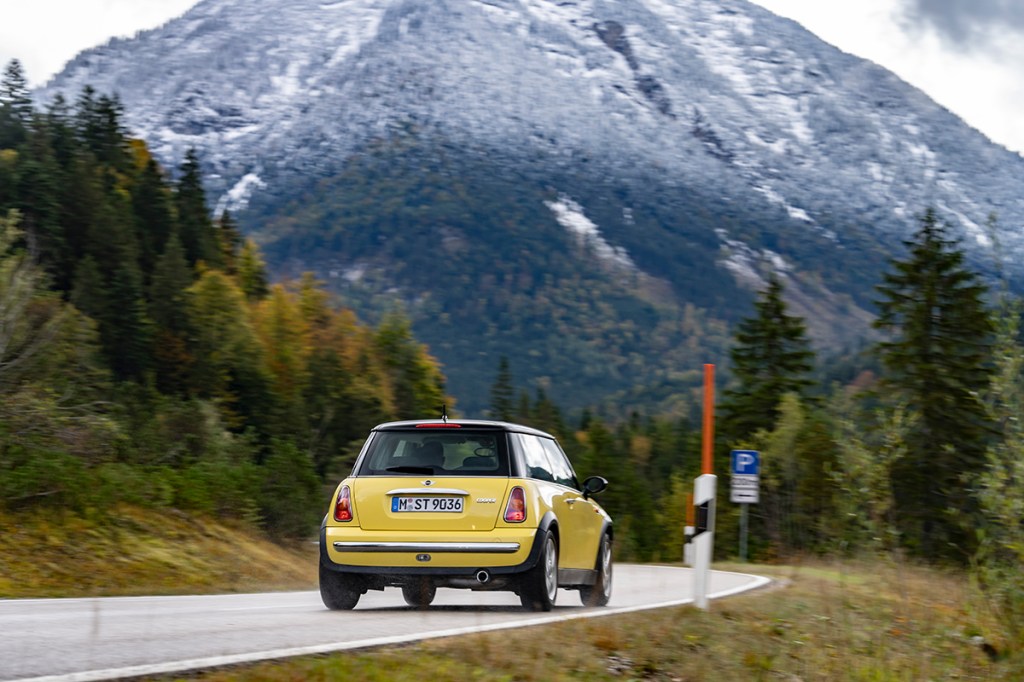
Transmission worries
Another big Mini R50 issue is the R65 Midlands five-speed gearbox that’s fitted to the One and Cooper from launch, until the facelift in 2004. Derived from the French unit fitted first in the Rover Metro, sadly, it has a reputation for getting noisy through to complete failure.
Facelift models are fitted with the more reliable, Getrag one — still with five speeds.
There’s also the less popular six-speed Steptronic automatic transmission. It is less popular because it’s also a very problematic gearbox, known to fail at low mileage and is not recommended.
Any electrical common problems on the Mini R50?
A particular problem area of the R50 is the electrics. Is the carpet damp? If it is, there could be a leak from the A-pillar – this is serious as the body control module lives here and if water has been getting in for a while, expect a range of odd electrical faults. Because of the cost, only second-hand body control units are viable and are available on auction sites, but you’ll need to recode it to the car, and that could be expensive.
Also, when turning the ignition on, watch for the airbag warning light. It is usually the result of cables being pulled when the seats are moved. Make sure you also check for blown stereo speakers, slow electric window motors and failing central locking. These are all easy fixes, with affordable and readily available second-hand parts.
Bodywork problems
The latest R50s are now 22 years old, so watch for lacquer peel on all panels, plus stone chips on the bonnet and windscreen. The doors and rear quarters are most vulnerable to parking damage, so look there next. Also, check for rust on the bottoms of the doors, around the boot handle and the bottom of the rear lights.

Common interior problems on the Mini R50
The standard seats in the Mini R50 lack support, and the sports seats are preferable but expect wear to the side bolsters from the lack of rear space, plus getting in and out. Talking of the front seats, there was an early recall for the front seat mechanism, which could jam in the folding position, so it’s worth checking the front seats fold easily on any prospective purchase. There have also been cases of the roof lining turning into a tent as the original fabric gives up.
Wheels
Are the alloy wheels badly curbed? Excessive damage could affect the wheel alignment. If they’re bad, it might be worth factoring into the price some four-wheel laser alignment.

Used Mini R50 prices
- $3,000 – $6,000: Earliest 2001 Coopers start at $3,000, but these have high miles, and for a couple of thousand bucks more, you could have a later base spec car.
- $6,000 – $10,000: Here’s where you’ll find the best spec, lowest mileage R50 Cooper LCI facelift cars with around 80,000 miles.
And in the UK?
- £300 – £900: The cheapest Mini R50 Ones start at about £300, with around 150,000 miles, but many have issues or are Categorized write-offs, so we’d advise spending a bit more.
- £1,000 – £1,900: This is where you’ll find the better, lower mileage 2002-2005 Coopers and Ones.
- £2,000 – £2,900: Here is where you’ll find the best 2004 and 2005 Coopers, plus the lowest mileage, lower-spec facelift cars.
- £3,000 – £4,000: You’ll need at least £3,500 for the earliest Y-registration cars, especially the pre-production ‘OBL’ launch cars, first owned by Mini, that are now sought after. The lowest mileage, highest spec 05, 55, 06 and 56 plate Minis start at £3000. We’d suggest you buy on condition, specification, and color. Late One, Seven and Cooper Park Lane UK limited edition models are worth searching out.
Words: Martyn Collins (ex-Editor of Modern Mini Magazine and author of New Mini).

